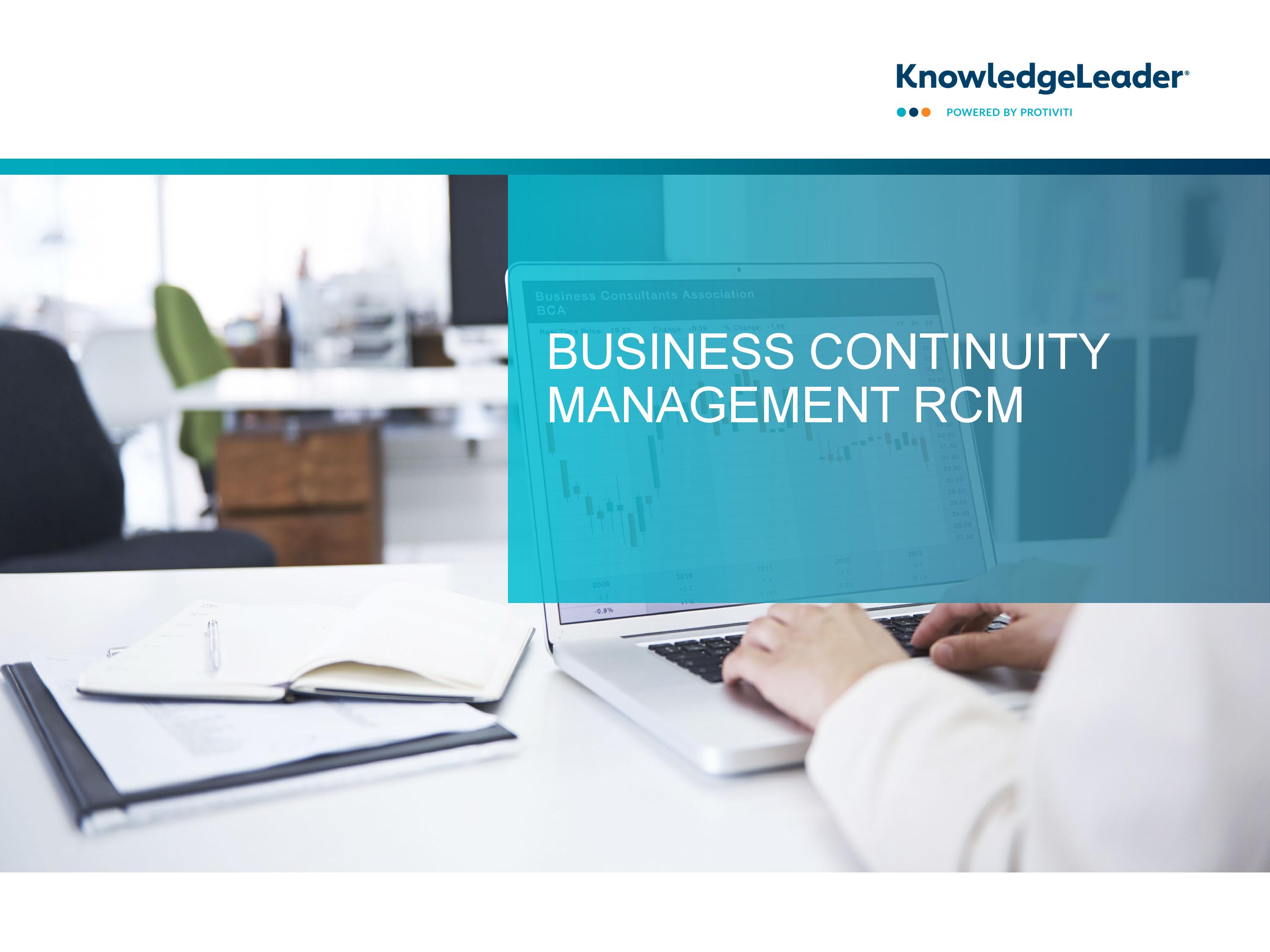Business Continuity Management RCM

A successful risk management strategy requires a strong internal control environment. The RCM format emphasizes that strong and risk-oriented internal control environments are often optimized with automated/manual controls, depending on the situation.
An RCM provides an overview of different control objectives that organizations should take into consideration and the corresponding controls to safeguard the company against risks, which may arise if not checked timely. Once customized to an organization, this document can help the user in assessing each control. The control assessment can then also be summarized to develop an action plan.
This document outlines risks and controls common to the 4.71 Manage Business Continuity Program process in a risk control matrix (RCM) format.
Sample risks include:
- Inability to recover and restore critical business data.
- Informal and/or ineffective management activities and practices could delay/prevent a successful recovery of business processes.
- Execution problems or issues during backups of financial data are not identified, reviewed, researched and resolved on a regular basis.
This document can be used as a sample RCM and is not meant to be an exhaustive list of risks and controls. The KnowledgeLeader team will periodically update this RCM with new content. Organizations should select, update and modify the risks and controls included in this document to ensure that it reflects business operations.